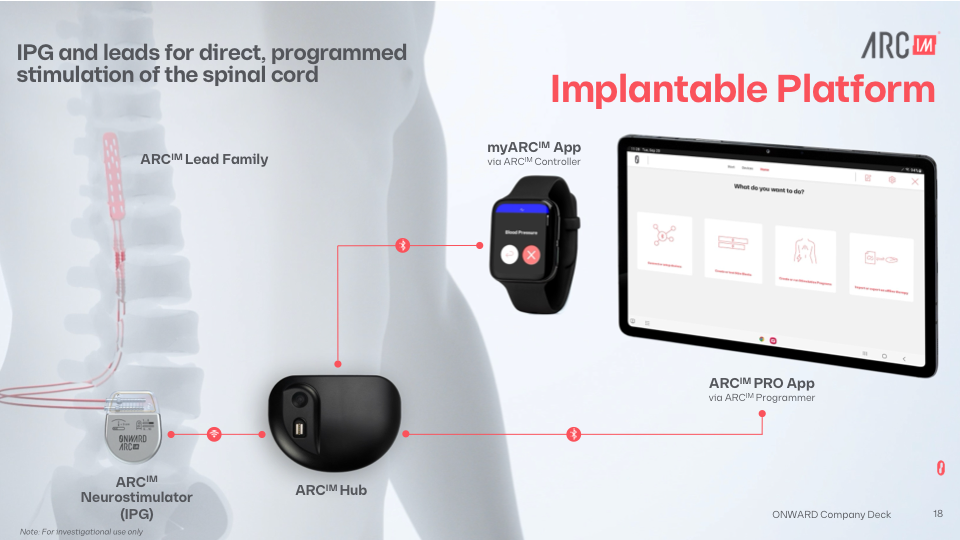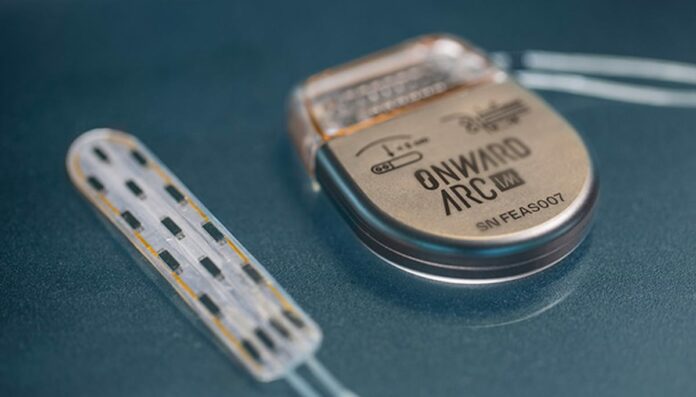People with Parkinson's disease are diagnosed earlier and live with the disease for longer periods as treatments evolve, but a persistent, late symptom is difficulty walking. A promising new spinal implant from Swiss researchers offers some hope that this too can be effectively treated.
The multi-institutional team is led by Onward a spin-off company from the prestigious Ecole Polytechnique Federale de Lausanne in Switzerland, which since 2015 has raised $170 million to develop and commercialize medical devices for people living with brain and spinal cord injuries.
The problem facing researchers, and of course the patients themselves, is the decreasing effectiveness of treatment with chemical and deep brain stimuli as the condition begins to affect walking. While additional dopamine and brain stimulation can help minimize tremors and other symptoms, walking can still be impaired.
Jocelyne Bloch and Grégoire Courtine, founders of the EPFL NeuroRestore research team focusing on this topic, felt that perhaps the neural signals that lead to successful locomotion could be enhanced downstream, in the spinal cord, rather than in places relevant in the motor cortex or cerebellum. They were clearly encouraged by the success of a spinal implant intended for people with paralyzing injuries. This new solution is an extension of the same principle and hardware.
To focus expectations, it must be clear that the patient being monitored, Marc, is the only human being who attempts this, although, according to him, it is very effective. These preliminary results will be followed by testing in six more people, with a grant from the Michael J. Fox Foundation.
As expected, the implant, called ARC-IM, is not exactly easy to install and requires considerable work to make it work.
First, the patient has a socket of electrodes placed around the part of the spine that sends signals to the leg muscles. This is where, albeit an oversimplification, the “walk” signal becomes the complex rhythm of muscle movements that most tend to take for granted.

A control unit is then attached that has motion models trained on actual motion capture images of the person walking, if possible. These are triggered by cortical activity that has also been monitored and characterized in the patient, so the unit can activate muscle groups in synchrony with intent, not just operate the legs like machines.
Basically, by watching the patient attempt to walk and comparing it to intact gait and neural signals, the implant can bridge the gap between them, completing the loop between intention, action and feedback.
As seen in the before and after videos of Marc moving, the difference is night and day. While he previously had trouble walking, and especially in certain situations such as entering an elevator or climbing stairs, he now moves without any obvious impediment.
“Getting into an elevator… it sounds simple. For me it was impossible before. “I was skating and I froze,” Marc said in a NeuroRestore video showing the effectiveness of the device. “Now I'm going to go in quietly. I have no problem. It allows me to walk better, it allows me to do five kilometers without stopping.”
If you didn't know he was living with advanced Parkinson's disease, you certainly wouldn't guess it from the way he walked around his picturesque hometown near Bordeaux. At most you would think that he has had a long day skiing.
With just one patient registered, it will be a while before someone with a similar condition can walk into their doctor's office and say "I want that implant." But the transformative effect of technology on Marc was clearly too strong a signal not to boast a little. The team's article appears in the journal Nature Medicine.
As for commercializing the technology (because that's how these things tend to reach most people), Onward has all the money and patents to make it happen, and the exclusive right to do so. Before the full implant is available (which could take years), the company intends to offer an external spinal stimulation platform called ARC-EX.




